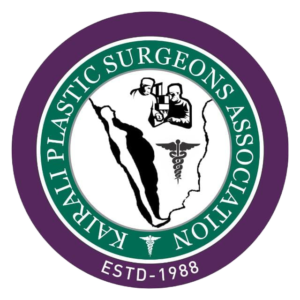
- Abdominal Wall Reconstruction
- Acute Trauma Management
- Breast Reconstruction
- Brachial Plexus and Peripheral Nerve Surgeries
- Burns And Reconstructive Surgeries
- Chest Wall Reconstruction
- Cleft And Craniofacial Surgeries
- Congenital Deformities
- Diabetic Foot & Its Management
- Gender Confirmation Surgeries
- Hand Surgeries
- Head & Neck Reconstruction
- Micro Vascular surgery
- Negative Pressure Wound Therapy
- Pressure Sore And Reconstructive Procedures
- Regenerative Medicine
- Tissue Expansion
INTRODUCTION:
Regenerative medicine is a relatively new and revolutionary field of medicine using indigenous tissue or cells to repair and replace damaged tissues by trauma or disease or worn by age.
The Salamander Factor- Salamanders are amphibians with remarkable properties to regenerate entire limbs. While how they do it remains a marvel, they are a great symbol of healing and regeneration.
This field incorporates tissue engineering, gene therapy and nanotechnology to achieve its results. Regenerative medicine includes isolation of stem cells and their manipulation to be programmed to desired target tissues which then need to be transferred through a vector to the patients.
The stems cells that are harvested may be adult stem cells that are multipotent or embryonic stem cells that are pluripotent. Till date the FDA has approved all research and studies for adult stem cells. The major ethical issue with the harvest of embryonic stem cells being the fact that they need to be harvested at a pre-implantation stage (blastema) and amounts to embryonic loss.
PROCEDURE
Harvesting a patient’s autologous cells or stem cells requires some procedure which amy involve creating a small wound at some part of the body and their use is delayed until the cells are culture expanded.
First, stem cells, whether isolated from adult tissue or induced, will often require tight control over their behavior to increase their safety profile and efficacy after transplantation.
Second, the creation of large engineered replacement tissues requires technologies that enable fully vascularized grafts to be anastomosed with host vessels at the time of transplant, allowing for graft survival
Thirdly, creating a pro-regeneration environment within the patient may dramatically improve outcomes of regenerative medicine strategies in general. An improved understanding of the immune system’s role in regeneration may aid this goal, as would technologies that promote a desirable immune response
NEED for Regenerative Medicine: the need for regenerative medicine, with all its ethical and political issues arise from the fact that with increasing longevity and lifestyle changes, the need for organ transplant has gone very high with shortage of donors. Also, major debilitating diseases that pose a large burden on healthcare as well patients well-being including, diabetes, Parkinson’s, osteoarthritis, hematopoietic disorders, need futuristic approach.
Stem cell regenerative medicine uses three different strategies:
- Implantation of stem cells after tissue culture into an existing tissue structure
- Implantation of stem cells into a tissue scaffold that guides restoration
- Induction of residual cells of a tissue structure to regenerate the necessary body part
The cells used in these therapies are either autologous or allogeneic and are typically differentiated cells that still maintain proliferative capacity.
Examples:
Autologous chondrocytes are harvested from articular cartilage, expanded and implanted to the damaged knee with full thickness cartilage damage.
Autologous fibroblasts to improve the appearance of nasolabial fold wrinkles
Autologous keratinocytes for severe burn wounds for inadequate skin cover;
The harvest of cord blood to obtain hematopoietic progenitor and stem cells.
